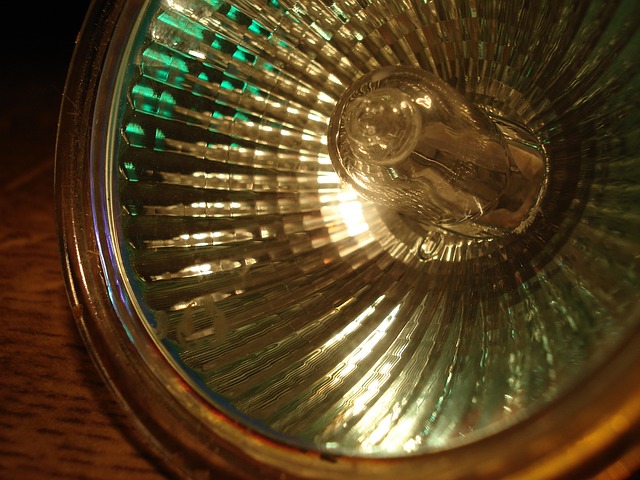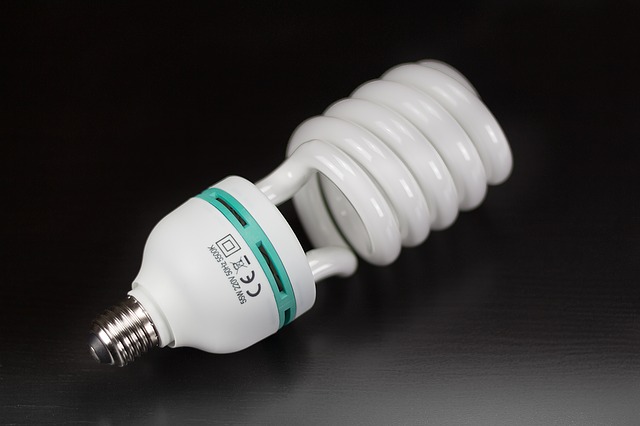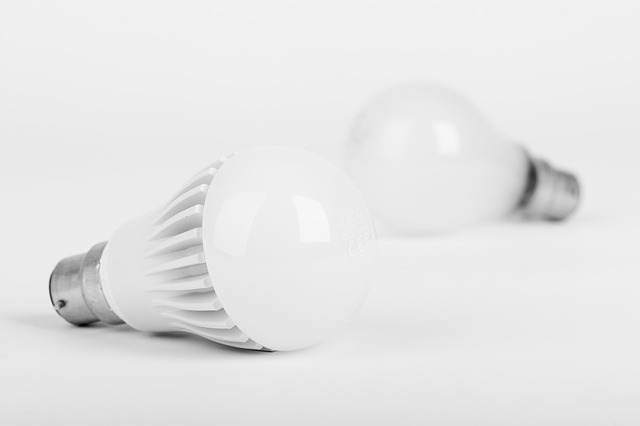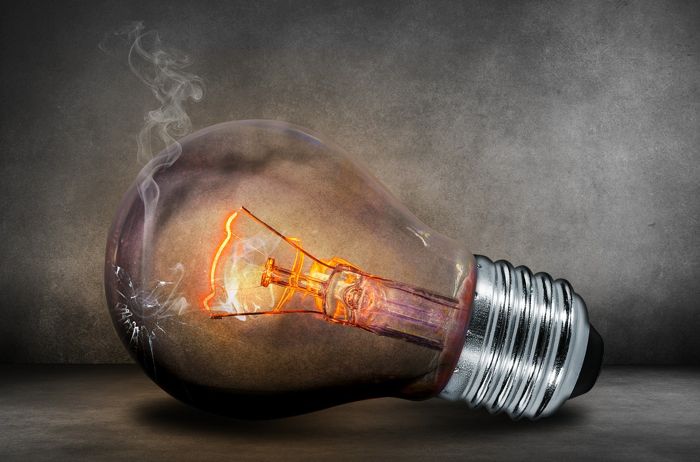It’s getting harder to find regular incandescent bulbs.
They’re being replaced by compact fluorescent lamp (CFL), halogen, LED (light-emitting diode), and other more energy efficient options, including a higher efficiency incandescent that includes halogen gas to slow the deterioration of the tungsten filament.
According to the National Geographic, “On January 1, 2014, in keeping with a law passed by Congress in 2007, the old familiar tungsten-filament 40- and 60-watt incandescent light bulbs can no longer be manufactured in the U.S., because they don’t meet federal energy-efficiency standards.” This is the last step in a phase-out that started in 2012, and has already affected the 75- and 100-watt varieties.
The old incandescents will be available only until supplies run out. Then, according to a recent survey, about half of Americans intend to switch to CFLs, with about a quarter planning on using LEDs.
About 3 in 10, however, are stocking up on the old style incandescents while they can. Why? Concerns about headaches, radiation, and even cancer.
If you have a day job that takes you into another office, you probably have little say in what kind of lighting is used (though you never know—an understanding boss may listen to suggestions). But in your home office or other writing/creative space, you get to choose.
Which of the newer, energy efficient options is best for your health, your work, and your productivity?
First, A Little Bit About Incandescents
These work about the same as they did over 100 years ago when Thomas Edison invented them. Electricity heats up a wire filament of tungsten metal, which causes it to glow and give off light. Over time, the tungsten vaporizes and collects on the inside of the bulb until it’s too thin to carry the electrical current, and it burns out. (The black in the burned-out bulb is what remains of the metal.) The glass around the filament contains an inert gas mixture to help extend the life of the filament, usually nitrogen-argon.
This process also gives off heat, however, which is why incandescents are considered inefficient—about 75 percent of the energy produced is heat instead of light.
On the plus side, these bulbs were inexpensive, they produced an immediate light with good color, and they had a good safety profile. People rarely reported feeling ill while working around them, for example.
It also helps to understand what is meant by “watt.” It’s a term used to describe the energy required to produce light. (It doesn’t have anything to do with brightness—“lumen” is the term used to describe or measure brightness.) That’s why a 13-watt CFL can produce just as much light or brightness as a 60-watt incandescent (about 800 lumens).
Because of the energy issue, however, the government has decided to phase out standard incandescents in favor of more energy-efficient options, such as those below. While most people think it’s a good move for the planet, some remain concerned about potential health issues.
 1. Halogens: Not the best option for your office.
1. Halogens: Not the best option for your office.
These are similar to incandescents, in that they contain a tungsten wire filament heated by electricity. The difference is that they are up to 20 percent more energy efficient, and instead of being filled with nitrogen-argon, the bulbs use halogen gas as a filler, which causes the vaporized tungsten to be deposited back onto the filament. This action, combined with high pressure inside the tube, extends the life of the light.
Halogen lights create a crisper, brighter white light than incandescents, which may be great on vehicle headlights, but can feel harsh in a workplace setting. They also burn hotter, and emit some low-dose UV radiation. According to a 2009 study, for example, “Halogen lamps emit significant levels of ultraviolet radiation and should be doped or covered with glass prior to use.”
Incandescents emit some UV radiation too, but the glass of the bulb blocks most of it. Because halogens burn hotter, they require a quartz-glass bulb—a good conductor of radiation. A study in the 1990s reported that the combination of the high temperature and the quartz could produce potentially harmful levels of UV radiation. According to the Environmental Health Directorate in Australia, the hazard of these bulbs to the eyes and skin could be comparable to exposure from strong sunlight.
Manufacturers have worked to solve the issue by encasing the bulbs in special glass or quartz filters or outer bulbs that block UV rays. If you’re using halogens, it’s important to be sure that they are built with this type of filter to protect your eyes and skin. Most companies also recommend that you use suitable covers on these lamps, to protect from UV radiation and also from hot fragments that could cause burns should the bulb shatter for some reason.
Pros: More efficient than incandescents, last longer, and maintain light quality over time (they don’t “cloud over” like incandescents can).
Cons: Burn hot, may emit some UV radiation, and create a harsh white light that’s likely to cause eye fatigue over time.
Warnings: Position the light a good distance away from you, to reduce any potential risk from UV radiation. The farther away the light (such as on the ceiling), the less radiation you’re exposed to. Also, be sure the bulb isn’t touching anything flammable. Because it burns hot, it could potentially cause a fire if in contact with drapes, for example, or paper, carpet, blankets, etc.
 2. CFLs: Best to avoid these in your home office.
2. CFLs: Best to avoid these in your home office.
These work differently than incandescents or halogens. Instead of heating a wire filament, they drive an electric current through a tube that contains argon and mercury (instead of nitrogen-argon). The gas then produces an ultraviolet light, which stimulates a fluorescent coating on the inside of the tube. As the coating absorbs energy, it emits light.
These are mini versions of the long-tube fluorescents, and can be fit into most standard light bulb sockets. They’re said to use about 75 percent less energy than incandescents to produce the same light. That’s why environmental advocates like them—they reduce electricity use and reduce the carbon footprint of any location that employs them. They also last longer—typically 6000- 15,000 hours compared to the 750-1,000 hours for a normal incandescent bulb, according to the FDA.
There are some concerns with these lights, though. First, they don’t create instant light—it takes a few minutes for them to warm up and reach full brightness. Second, because they contain some mercury (toxic to humans and the environment), they require a little extra care. A 2011 study, for instance, reported that once broken, a CFL emits mercury into the air for weeks to months, and the total can exceed safe human exposure levels in a poorly ventilated room.
The EPA doesn’t consider these bulbs to be hazardous waste because the amount of liquid mercury that leaches from a broken bulb is below acceptable levels. The study showed that the vapor released into the air, however, can reach unsafe amounts if unattended. The solution, of course, is to clean up any broken bulbs quickly. The EPA provides directions on CFL cleanup here, as well as careful handling tips to avoid breakage.
Third, there’s the UV radiation. According to a 2012 study, skin exposed to these bulbs develops damage similar to that which would be expected with exposure to ultraviolet radiation from the sun.
“Despite their large energy savings,” said lead researcher Miriam Rafailovich, Ph.D., “consumers should be careful when using compact fluorescent light bulbs. Our research shows that it is best to avoid using them at close distances and that they are safest when placed behind an additional glass cover.”
The FDA also says it’s best to stay a few feet away from the bulb, and that the glass or plastic used in lighting fixtures will provide additional UV filtering. They suggest that if you want to take additional precautions, you can purchase the types that have additional glass or plastic covers.
Finally, there have been some reports of CFLs being linked to headaches. Old-style fluorescent tubes had a noticeable “flicker rate” that was linked to headaches in some reports. The newer CFLs have a flicker rate that is supposed to be undetectable by humans (but it’s still there). Some users still report being sensitive to them.
So far, we have no studies linking CFLs to headaches, but that doesn’t mean they won’t affect you. Questionnaires have linked CFLs to migraines, fatigue, eye strain, anxiety, and irritability.
Pros: Lots more energy-efficient than incandescents, last a lot longer.
Cons: Emit UV radiation, contain mercury, take awhile to warm up to full brightness, sensitive to cold temperatures and high humidities (not the best for outdoor use), and increase risk of headaches in some people.
Warnings: Take precautions to avoid breaking the bulbs (twist them in and out of the sockets gently). If you have them in your home office or working area, make sure they’re at least a few feet away from you, and behind a glass or plastic filter, to reduce UV exposure. If you work in this area every day—or if you are particularly photosensitive (such as those with lupus)—get the kind that have the extra shielding (those that look like an old-style bulb rather than the twisted-coil look), or choose a different type of bulb—such as an LED.
 3. LED: The best energy-efficient option.
3. LED: The best energy-efficient option.
LEDs work differently than any of the other bulbs. According to the University of Notre Dame:
“A diode is composed of a layer of electron rich material separated by a layer of electron deficient material which forms a junction. Power applied to this junction excites the electrons in the electron rich material leading to photon emission and the creation of light. Depending on the chemical composition of the semiconductor layers, the color of light emission will vary within the electromagnetic spectrum.”
Okay, a bit complicated. Suffice to say that these lights are efficient, last way longer than CFLs , use less power per unit of light than CFLs, and cost about half as much to operate. They turn on instantly (no delay), are much more durable than CFLs, emit a lot less heat than CFLs, and do not emit any UV radiation.
Whereas they used to be used only as indicator lights because they produced only a narrow beam of light, improvements in technology have allowed them to spread light over a larger area. They also used to be significantly more expensive than other options, but the price gap is narrowing (though they remain the most expensive option so far).
Considered to be the future of lighting, LEDs are also recommended to migraine sufferers (in addition to incandescents) as the best option for reducing symptoms.
According to Loren Grush writing for Fox News:
“Considered to be the future of bulb technology, LED lights don’t contain any filaments that will burn out, and they don’t heat up very much either. Instead, they are illuminated by the movement of electrons in a semiconductor material, causing no flickering and emitting almost no UV light.”
Pros: The most energy efficient option, the longest-lasting option, emit no UV radiation, not linked to migraines.
Cons: More expensive than other options, but if you consider how long they last, the costs usually even out (or may be even lower than CFLs).
Warnings: Migraine sufferers may have the best luck with the warm white options (as opposed to the cool white ones).
Find a handy comparison chart for incandescents, LEDs, and CFLs, here.
What kind of lights do you use in your home office? Are you sensitive to some types? Please share any tips you may have with our readers.
Sources
Patrick J. Kiger, “U.S. Phase-Out of Incandescent Light Bulbs Continues in 2014 with 40-, 60-Watt Varieties,” National Geographic, December 31, 2013, http://energyblog.nationalgeographic.com/2013/12/31/u-s-phase-out-of-incandescent-light-bulbs-continues-in-2014-with-40-60-watt-varieties/.
Osram Sylvania, “Osram Sylvania Socket Survey 6.0 2013 Results,” KRC Research, December 2013, https://assets.sylvania.com/assets/Documents/Socket%20Survey%206%200%202013%20web.ace8e42b-1aa1-4d10-897c-78e40ff72ccb.pdf.
Rachel S. Kline, et al., “The risk of ultraviolet radiation exposure from indoor lamps in lupus erythemetosus,” Autoimmun Rev., February 2009; 8(4):320-324, http://www.ncbi.nlm.nih.gov/pmc/articles/PMC2829662/.
“Tungsten-Halogen Bulbs May Cause a Hazard,” New York Times, July 30, 1991, http://www.nytimes.com/1991/07/30/health/tungsten-halogen-bulbs-may-pose-a-hazard.html.
“Ultraviolet Radiation from Quartz Halogen Desk Lamps and Down Lighting Environmental Health Guide,” Department of Health, Western Australia, 2006, http://www.public.health.wa.gov.au/cproot/1391/2/Ultraviolet_Radiation_from_Quartz_Halogen_Light_Sources.pdf.
“Compact Fluorescent Lamps (CFLs)—Fact Sheet/FAQ,” FDA, June 4, 2014, http://www.fda.gov/Radiation-EmittingProducts/RadiationEmittingProductsandProcedures/HomeBusinessandEntertainment/ucm116400.htm.
Yadong Li and Li Jin, “Environmental Release of Mercury from Broken Compact Fluorescent Lamps,” Environmental Engineering Science, October 2011; 28(10):687-691, http://online.liebertpub.com/doi/abs/10.1089/ees.2011.0027.
“SBU Study Reveals Harmful Effects of CFL Bulbs to Skin,” Stony Brook University, July 18, 2012, [Press Release], http://commcgi.cc.stonybrook.edu/am2/publish/General_University_News_2/SBU_Study_Reveals_Harmful_Effects_of_CFL_Bulbs_to_Skin.shtml.
“Throwing Light on Migraine Triggers,” Challenging Migraine, September 2012, Issue 16, http://www.migraine.org.uk/js/plugins/filemanager/files/downloads/Challenging_Migraine_September_2012.pdf.
Rich Mintzer, “Health Problems Ignored in the Incandescent Bulb Ban,” Breaking Energy, January 17, 2012, http://breakingenergy.com/2012/01/17/health-problems-ignored-in-the-incandescent-bulb-ban/.
John Naish, “The medical experts who refuse to use low-energy light bulbs in their homes: Professors have stocked up on old-style bulbs to protect against skin cancer and blindness. So should YOU be worried?” Daily Mail, May 12, 2014, http://www.dailymail.co.uk/health/article-2626564/The-medical-experts-refuse-use-low-energy-lightbulbs-homes-Professors-stocked-old-style-bulbs-protect-against-skin-cancer-blindness-So-YOU-worried.html.
Wendee Nicole, “Ultraviolet Leaks from CFLs,” Environmental Health Perspectives, http://ehp.niehs.nih.gov/120-a387/.
Loren Grush, “Energy-efficient light bulbs could pose UV-risk to skin, trigger migraines,” Fox News, December 13, 2013, http://www.foxnews.com/health/2013/12/13/energy-efficient-lightbulbs-could-pose-uv-risk-to-skin-trigger-migraines.html.

